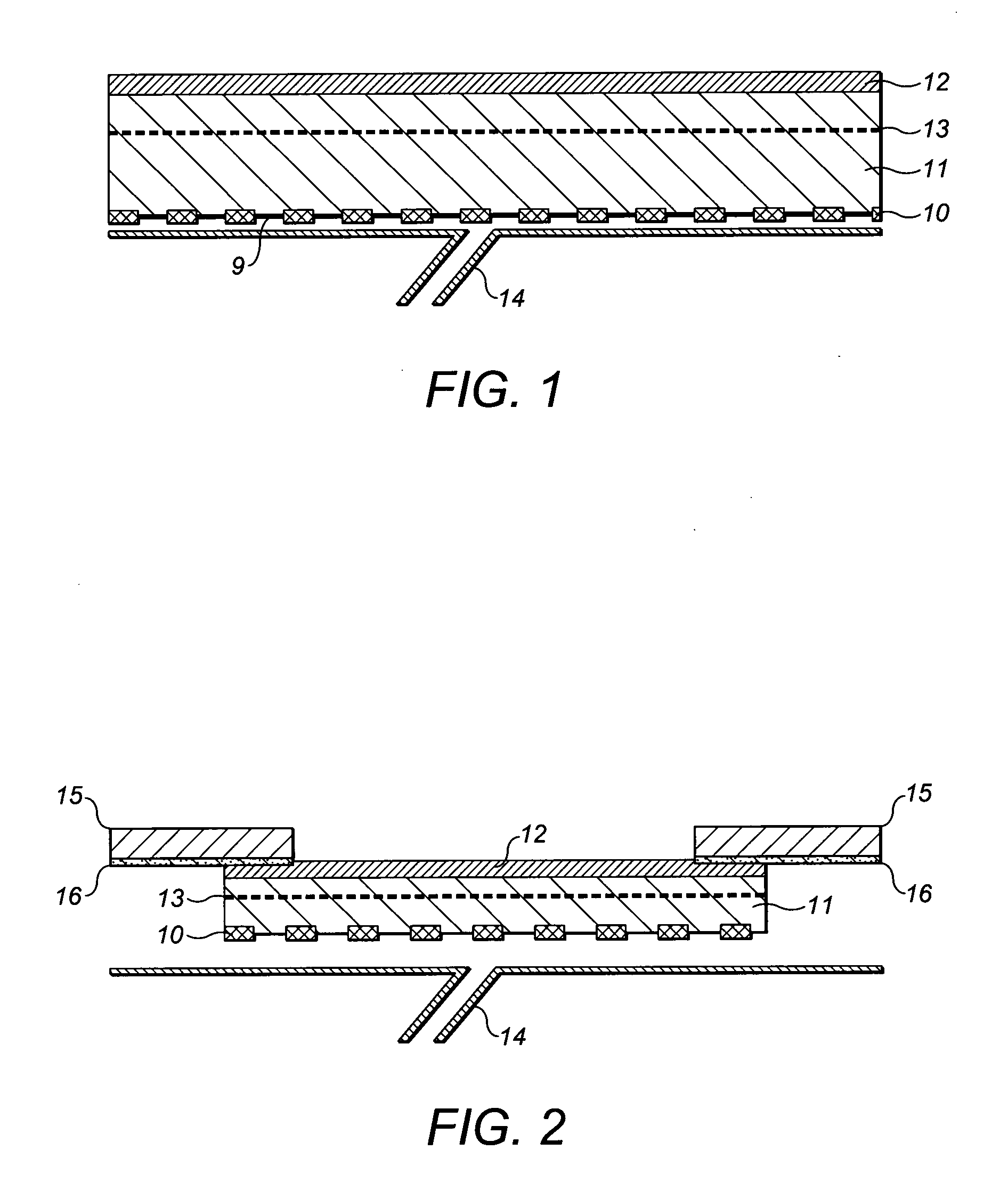Hydrogel composites and wound dressings
a technology of hydrogels and composites, applied in the field of absorbent hydrogel composites and wound dressings, can solve the problems of high adhesion of hydrogels and not being suitable in all situations
- Summary
- Abstract
- Description
- Claims
- Application Information
AI Technical Summary
Benefits of technology
Problems solved by technology
Method used
Image
Examples
example 1
[0101]A glass petri dish (circa 9 cm diameter) was lined with a polyurethane film (Inspire 2301, Intelicoat UK). Circa 1.5 to 2 g of the following pre-gel formulation was evenly spread across the petri dish. A polyester scrim (HDK D1451, circa 9 cm diameter) was placed on top of the pre-gel coated polyurethane. About 4 to 5 g of the following pre-gel formulation were evenly spread into the lined petri dish on top of the polyester scrim. The hydrogel was then cured.
[0102]Pre-gel: 67 parts by weight of 58% aqueous solution of the sodium salt of acrylamidomethyl-propanesulphonic acid (NaAMPS, LZ2405 Lubrizol), 0.5 parts acrylic acid (3-sulphopropyl) ester potassium salt, commonly known as SPA or SPAK (SPA or SPAK is available commercially in the form of a pure solid from Raschig), 30 parts glycerol. These ingredients are mix A. Into 100 g of mix A, 0.11 g of a 2:10 (by weight) mixture of Daracure 1173 photoinitiator (Ciba Speciality Chemicals) and IRR280 cross-linker (PEG400 diacrylate...
example 2
[0108]A glass petri dish (circa 9 cm diameter) was lined with a polyurethane film (Inspire 2301, Intelicoat UK). Circa 1.5 to 2 g of the following pre-gel formulation was evenly spread across the petri dish. A polyester scrim (HDK D1451, circa 9 cm diameter) was placed on top of the pre-gel coated polyurethane. About 4 to 5 g of the following pre-gel formulation were evenly spread into the lined petri dish on top of the polyester scrim. The hydrogel was then cured.
[0109]Pre-gel: 67 parts by weight of 58% aqueous solution of the sodium salt of acrylamidomethyl-propanesulphonic acid (NaAMPS, LZ2405 Lubrizol), 0.5 parts acrylic acid (3-sulphopropyl) ester potassium salt, commonly known as SPA or SPAK (SPA or SPAK is available commercially in the form of a pure solid from Raschig), 30 parts glycerol. These ingredients are mix A. Into 100 g of mix A, 0.11 g of a 2 to 10 (by weight) mixture of Daracure 1173 photoinitiator (Ciba Speciality Chemicals) and IRR280 cross-linker (PEG400 diacryl...
example 3
[0114]A circular piece 12 cm in diameter of an adhesive coated polyurethane, Inspire 2317, Intelicoat UK was laminated as an overlayer to the polyurethane film of Example 1.
PUM
 Login to View More
Login to View More Abstract
Description
Claims
Application Information
 Login to View More
Login to View More - R&D
- Intellectual Property
- Life Sciences
- Materials
- Tech Scout
- Unparalleled Data Quality
- Higher Quality Content
- 60% Fewer Hallucinations
Browse by: Latest US Patents, China's latest patents, Technical Efficacy Thesaurus, Application Domain, Technology Topic, Popular Technical Reports.
© 2025 PatSnap. All rights reserved.Legal|Privacy policy|Modern Slavery Act Transparency Statement|Sitemap|About US| Contact US: help@patsnap.com



